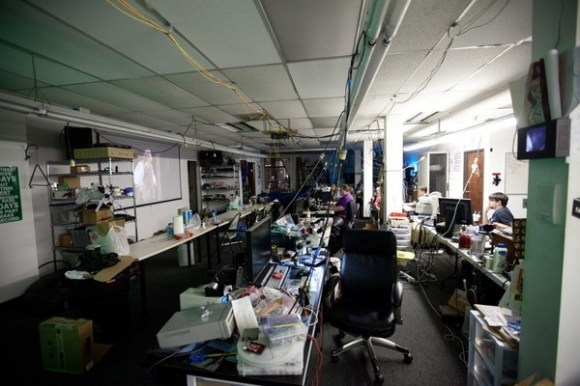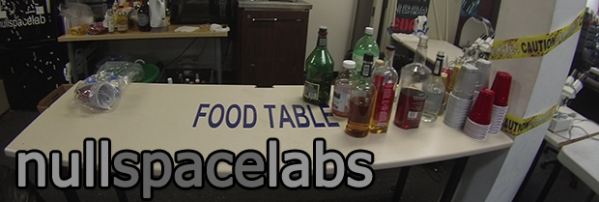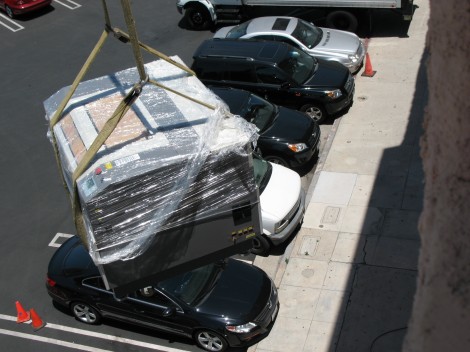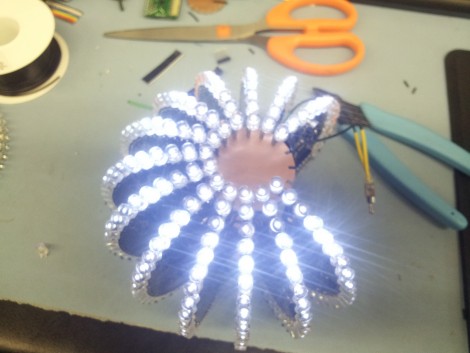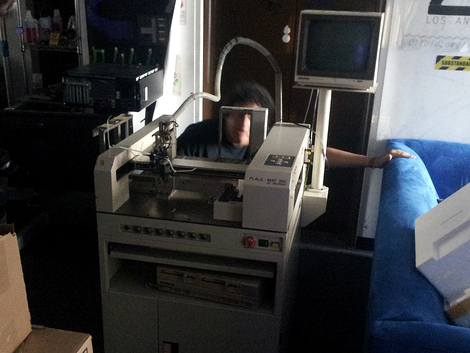There were two LA hackerspaces represented at our 10th anniversary party, and members from both of them were able to give a talk on the projects coming out of their labs. [Arko] from null space labs showed up with a few of his creations including CUBEX, his high altitude balloon payload and a demoscene board he’s been working on. [Tod] from Crashspace showed up with the rest of the Crash crew and helped out with the morning build-offs and labs.
A Demoscene Board
Demoscenes, for one reason or another, aren’t extremely popular in the US. In Europe, you can find teams working on programatically generated music videos year-round, coded for Commodore 64s, Amigas, even stranger computers, and x86 assembly. There’s an art to the whole thing, but for those of us on this side of the pond, there aren’t many venues to demonstrate impeccable graphics programming skill.
[Arko] wants to change this. He’s designed a demoscene board around a PIC micro with hardware graphics acceleration, USB OTG, VGA out at 640×480, and an audio out port. It’s meant to be a platform to create demos on, and already [Arko] has ported the famous Craft demo from [lft] to his platform. Edit: the Craft demo was playing on the older ATmega88 version of the board. The PIC board is a little more capable.
Being that there are so few Demo parties in the US, only building a board to play demos would be just a bit shortsighted. [Arko]’s main reason for giving this talk was to tell everyone about the LayerOne Demoparty next year just a few miles from the Hackaday Hackaspace. It coincides with the LayerOne conference, and the board itself will soon be available for sale in the Hackaday store.
Blink(1) and How To Kickstarter
When it comes to electronics and tech Kickstarters, Blink(1) defines what it means to have a minimum viable product. It’s a USB plug, a small microcontroller, and an RGB LED. That’s it. [Tod] wanted to take this simple project and learn how to turn it into a product. [Tod] emphasised the ‘learn’ part of his plan; the alternate title for this talk was, “How to Fail Multiple Times and Still Ship 20,000 Units.”
The Blink(1) started as a standard My First Arduino Sketch, blinking three LEDs, quickly moving over to a USB LED device. This rather large USB dongle sat there for a few years until he decided to turn this into a product. It turned out building a product is a lot more involved than building a kit, with considerations to the enclosure, the packaging, and the inevitable CNC mold fails. Assembly – and the success of his first Kickstarter – was also an issue. [Tod]’s friends ended up assembling most of the kits.
Despite these problems, [Tod] was still able to ship a few thousand units and is now working on another production run with SeeedStudio. It’s a remarkable story, with the Blink(1) used by Google, Disney, Microsoft, Facebook, and a whole bunch of other huge companies. The Blink(1) is also in the mainline Linux kernel, something you can’t say about a lot of Kickstarters out there.


